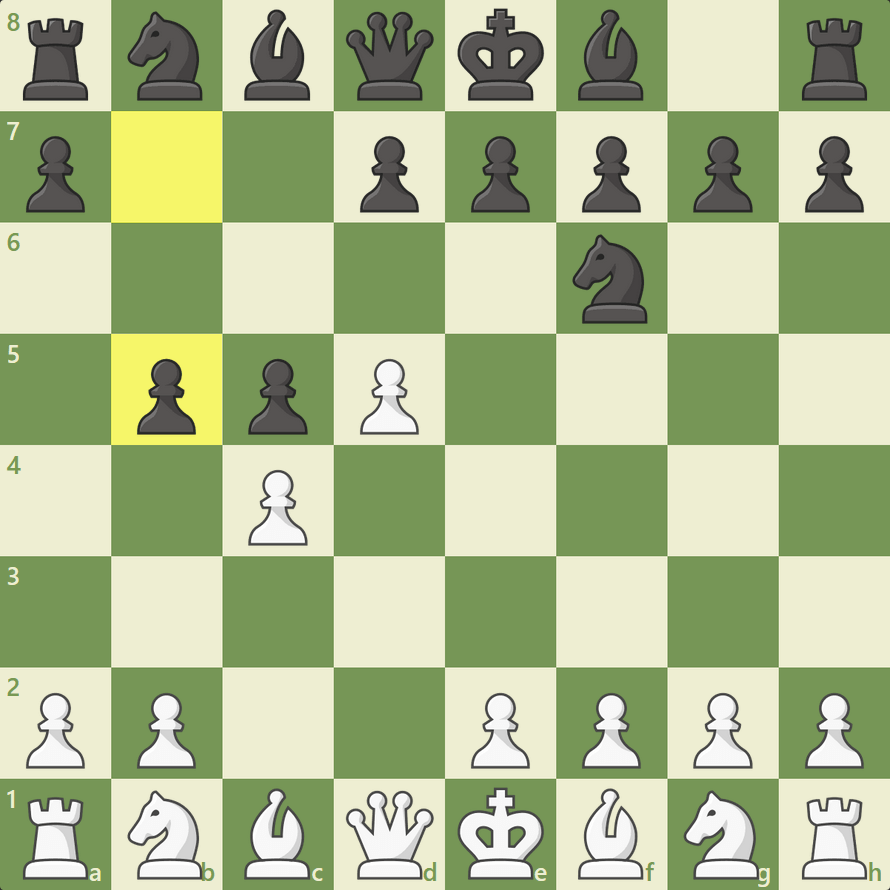
Gambit
The game starts, and your opponent seemingly offers you a pawn or a piece very early. Do you take it? Be careful! That "free" material might come with strings attached—you might be looking at a gambit.
Here's what you need to know about gambits in chess:
What Is A Gambit In Chess?
A gambit happens in chess when a player gives up material during the opening to seek some kind of compensation. Most gambits require the sacrifice of one or more pawns, while a few of them involve sacrificing more valuable pieces.

When a player offers a gambit, their opponent can accept or decline it. The opponent accepts the gambit when they take the material offered and decline it when they ignore the material.
Sound And Unsound Gambits
Gambits are sound when they provide adequate compensation for the lost material. This compensation can take many different forms: a lead in development, the gain of tempo or tempi, increased piece activity, the creation of structural weaknesses for the opponent, a space advantage, and more. The Queen's Gambit and the Benko Gambit are great examples of sound gambits.

On the other hand, unsound gambits are those that don't provide enough compensation. The Halloween Gambit is an example of an unsound gambit, as well as the once-popular King's Gambit.
Popular Gambits
There are many gambits for White and Black. Most involve pawn sacrifices in exchange for increased piece activity. Here are a few of the popular gambits in chess.
Queen's Gambit
The Queen's Gambit is one of the most sound gambits in chess. Players reach this gambit after 1.d4 d5 2.c4. White offers to give up a pawn temporarily to gain a strong center. Black can either take the pawn and enter the Queen's Gambit Accepted or ignore it to play the Queen's Gambit Declined.

If Black accepts this pawn and isn't careful, then White will simply recapture this pawn with their light-squared bishop and get a large space advantage in the center. We can see this illustrated after 1. d4 d5 2. c4 dxc4 3. e4 e6 4. Bxc4:

White gains a large center and developmental lead for free after recapturing the pawn!
King's Gambit
A common opening in the Romantic era of chess, the King's Gambit is an unsound opening for White that starts after 1.e4 e5 2.f4. White wants to get a strong center and open up lines for their rook after castling short.

Although technically unsound, the King's Gambit is a dangerous opening that can catch the unprepared opponent off guard. Former world champion GM Boris Spassky employed this gambit with success, even against strong players like GM Bobby Fischer. You can check out Spassky's game here and also learn how to play the King's Gambit with this course by GM Simon Williams.
You can also check out this video by NM Jeremy Kane, who analyzes a beautiful game that shows the King's Gambit in action.
Smith-Morra Gambit
The Smith-Morra Gambit is one of the lines that White can play in response to the Sicilian Defense. Players reach this gambit after 1.e4 c5 2.d4 cxd4 3.c3. Black either accepts the gambit and helps White develop with a tempo or lets White recapture on d4 and get a strong center.

If Black captures the pawn, the following position can arise after 1.e4 c5 2.d4 cxd4 3.c3 dxc3 4.Nxc3 d6 5.Nf3 Nf6 6.Bc4 e6, where White's large lead in development is apparent. As you can see, Black has developed just one piece.

Benko Gambit
The Benko Gambit is a line of the Benoni Defense that begins with the moves 1. d4 Nf6 2. c4 c5 3. d5 b5.

If White accepts the gambit, play continues 4.cxb5 a6 5.bxa6 Bxa6. The main line of the Benko Gambit Accepted results in positions similar to the following:

As you can see, Black has lots of compensation for the pawn. Black is ahead in development, can use the open a- and b-files with their rooks, and has a lot of long-term pressure. Here is a short video by IM David Pruess that highlights the Benko Gambit:
Halloween Gambit
The Halloween Gambit is an unsound gambit for White that arises after 1.e4 e5 2.Nf3 Nc6 3.Nc3 Nf6 4.Nxe5. White's point behind this dubious gambit is to take the initiative on the center of the board and push Black's knights around with the pawns.

Black can get a better position out of this opening in two different ways. They can either give the piece back early to get a lead in development or try to keep the material advantage by playing precise defensive moves. Stockfish recommends the second approach with the following line:
Budapest Gambit
The Budapest Gambit is an opening for Black that starts after 1.d4 Nf6 2.c4 e5. If White accepts the gambit and plays 3.dxe5, they lose control of the important e5- and c5-squares.

Conclusion
You now know what gambits are, why people play them, and some of the most popular ones for White and Black. Head over to our Lessons page and learn even more about gambits and how you can use them to win more games!







